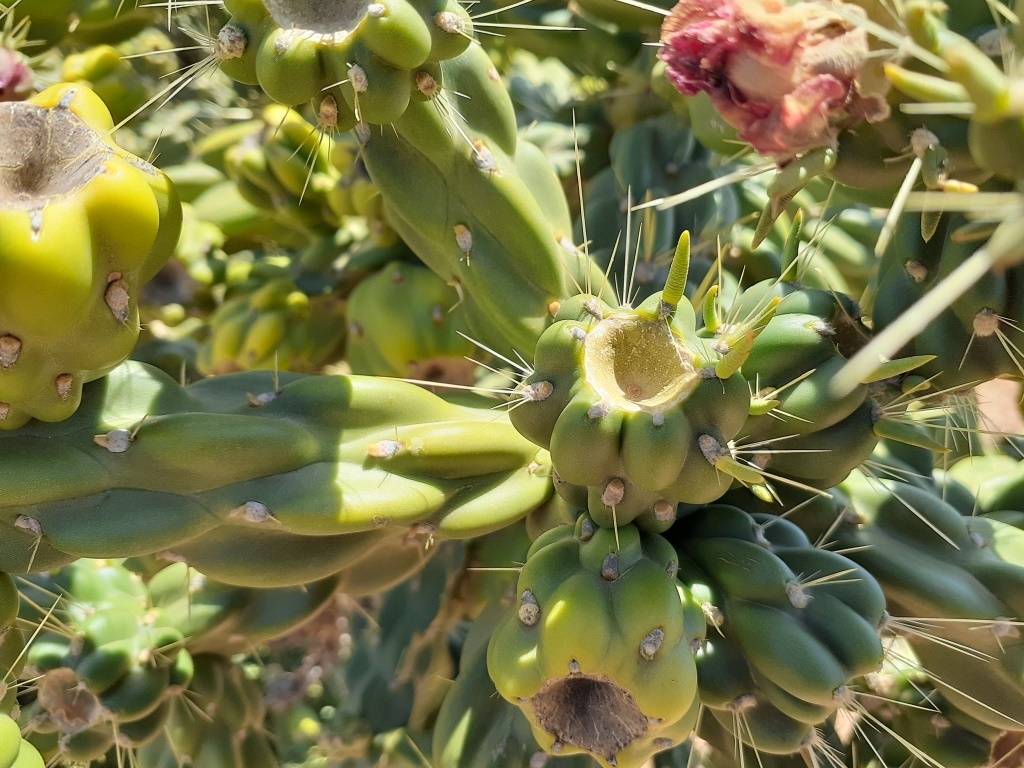Cylindropuntia imbricata
(Haw.) F.M.Knuth Devil's RopeArborescent shrub to c. 3 m high, much-branched above the cylindric (to c. 23 cm diam.), woody trunk. Terminal cladodes cylindric, tuberculate, 5–35 cm long, 2–3.5 cm diam., glabrous, dark green to grey-green; tubercles prominent, 2–5 cm long, 4.5–9 mm wide, 6–12 mm high; areoles 1.2–2.5 cm apart, apical on tubercles, filled with short dense white or brownish wool and small yellow glochids; spines 2–30 per areole, spreading, to 3 cm long, 0.2–0.5 mm wide near base, pale yellow, each covered by a papery, pale yellowish sheath 1–2 mm diam. Flowers 3–7.5 cm diam.; sepaloids purple, streaked green; petaloids spreading, purple; staminal filaments purple, anthers pale yellow; style purple, stigmas pale yellow to white; hypanthium tuberculate. Fruit obovoid, deeply depressed at apex, 2.5–7 cm long, 2.5–4 cm diam., strongly tuberculate, with few deciduous spines, green to yellow, dry, commonly proliferating. Flowers late spring–summer.
MuM. MuM. Also naturalised in WA, SA, Qld., NSW. Native to south-central USA and central Mexico. . Noted from a few roadsides and old tip sites in the Mildura and Manangatang districts.
A number of infraspecific taxa have been described. The populations are known to be very polymorphic, and as yet this variation has not been addressed taxonomically. Consequently no infraspecific names are recognised here, although Australian plants are apparently referrable to the type form (Chinnock 2015).
 Spinning
SpinningChinnock, R.J. (2015). Feral opuntioid cacti in Australia: Part 1. Cylindrical-stemmed genera: Austrocylindropuntia, Cylindropintia and Corynopuntia. State Herbarium of South Australia.



